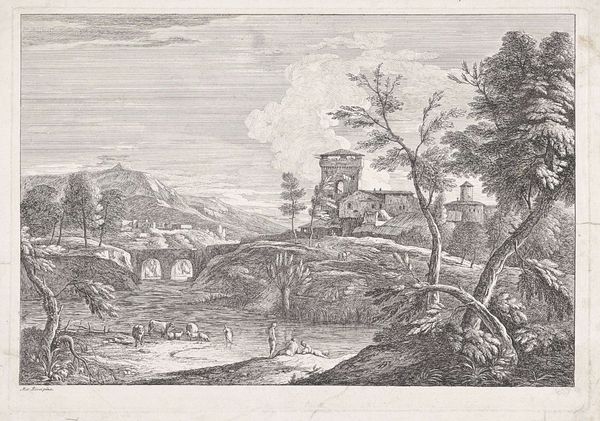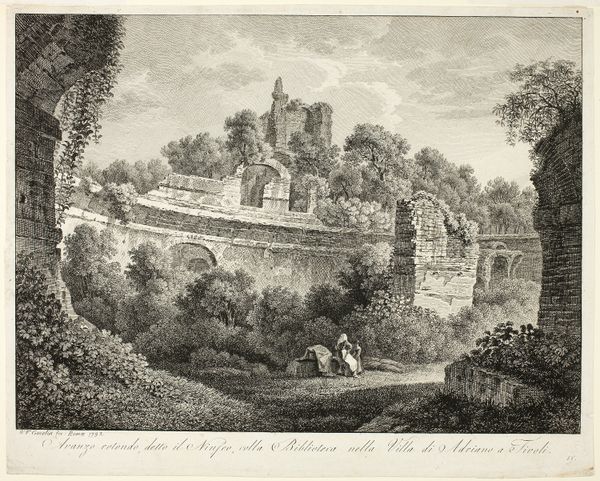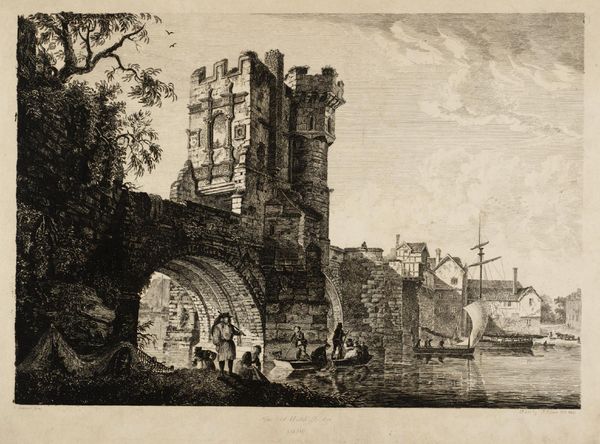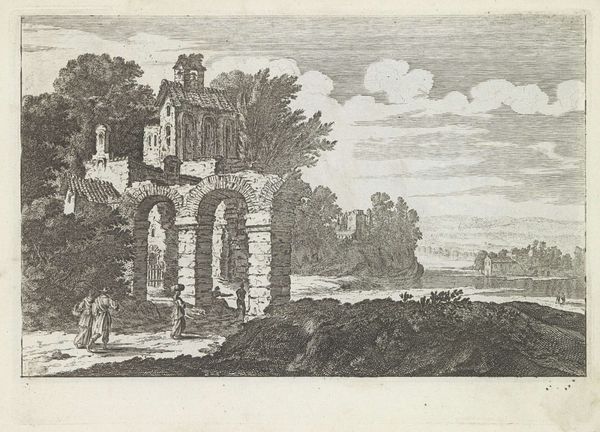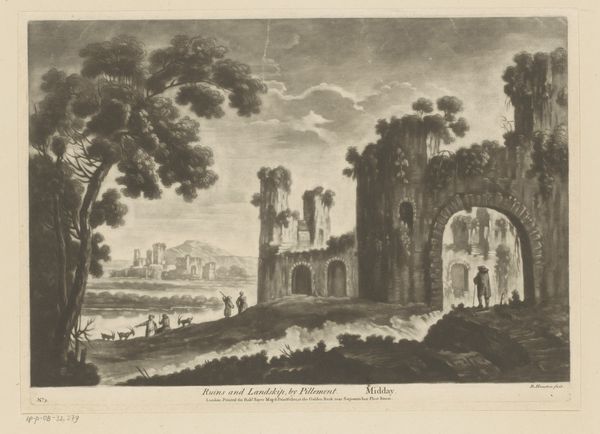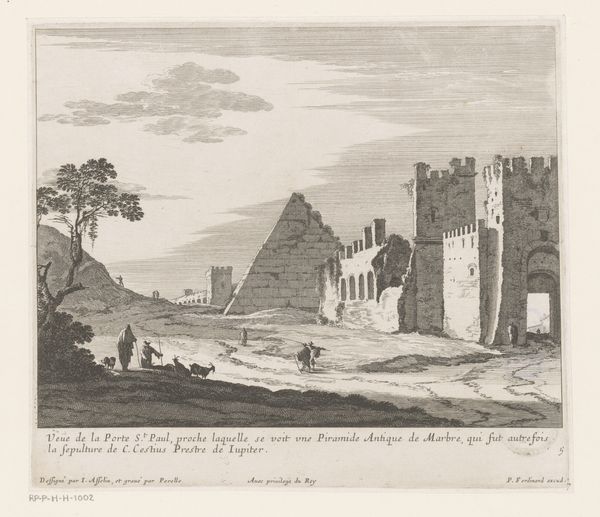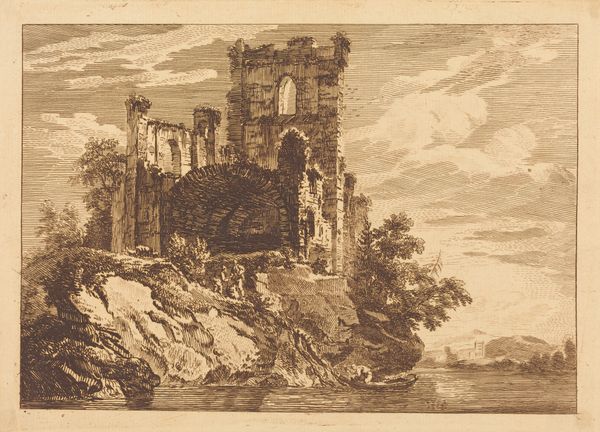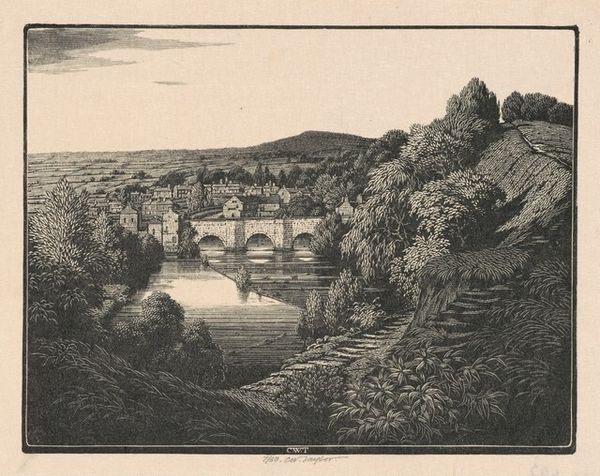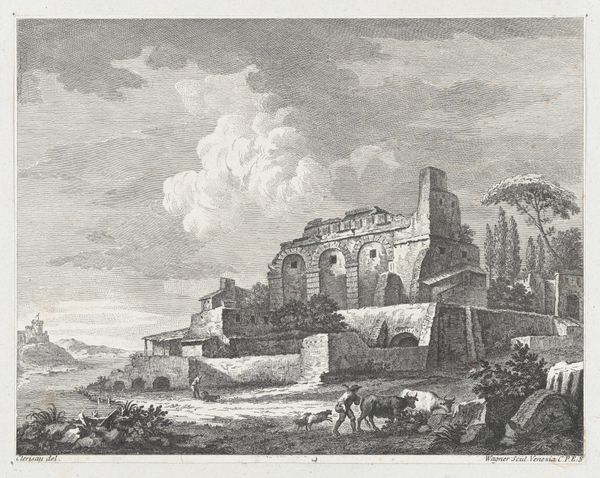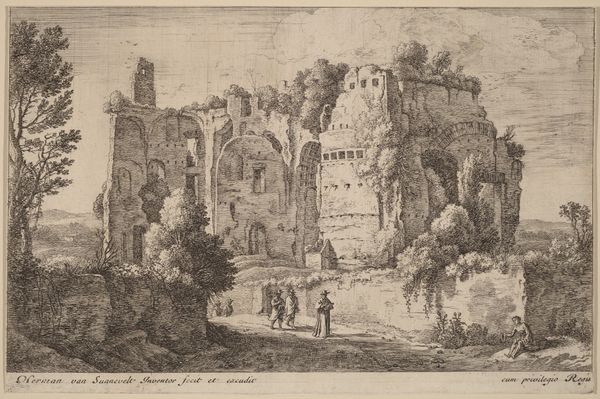
Bouwval van de walmuur over de rivier de Berdeel te Zutphen 1809 - 1869
0:00
0:00
alexandercranendoncq
Rijksmuseum
drawing, ink, engraving
#
drawing
#
pen drawing
#
landscape
#
ink
#
romanticism
#
cityscape
#
engraving
#
realism
Dimensions: height 150 mm, width 205 mm
Copyright: Rijks Museum: Open Domain
Alexander Cranendoncq created this print of the remains of the city wall over the river Berkel at Zutphen. It’s rendered in a graphic medium—probably etching, perhaps engraving—a process dependent on the skillful use of metal tools to incise an image into a metal plate. Look closely, and you can see the way the composition emerges from countless tiny lines. This was a reproductive technique, used to circulate images widely. There is a subtle and repetitive labor involved, a kind of proto-industrialization. The image depicts a medieval ruin. The very subject of the work is the process of decay and transformation – a dialogue between human intention and natural forces. Even as Cranendoncq made this image, the wall was already becoming a picturesque fragment. Consider how the print itself is also subject to the ravages of time. It serves as a reminder of the constant interplay between creation and destruction, labor and entropy.
Comments
No comments
Be the first to comment and join the conversation on the ultimate creative platform.

